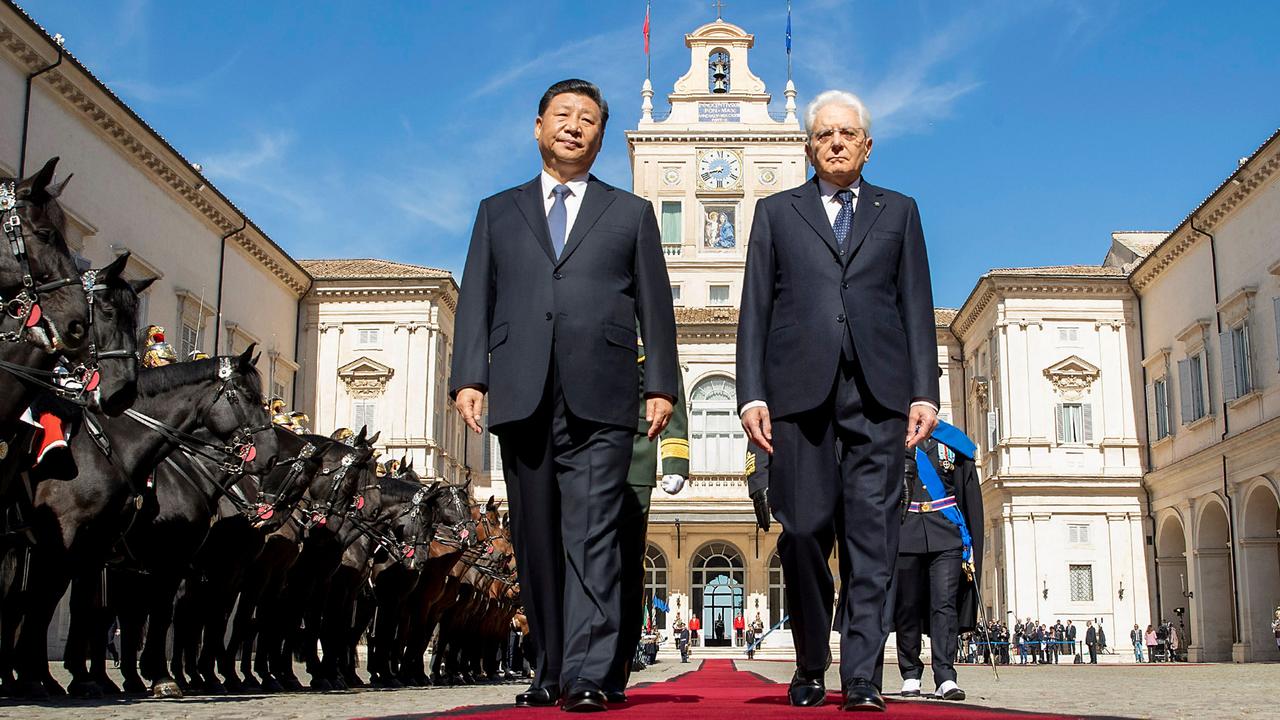China’s economy rebounds, but big challenges lie ahead
The impressive growth last year gives China room to tackle a challenging agenda that could slow the economy.

China’s policymakers — of whom only President Xi Jinping really counts these days — appear well set up by the GDP growth numbers announced on Thursday night to pursue their core agenda for 2018.
But some of the gloss is reduced by the continuing scandal about officials massively inflating regional growth figures to boost their personal careers.
Xi’s ambitious agenda for 2018 includes greater focus on the environment, on shepherding the crucial real estate sector towards affordable housing, on retooling the state-owned sector while maintaining its grip on the upstream sectors of the economy, and on restraining lending to rein in still worrying debt levels.
The unexpectedly fast pace of growth in 2017 — which came in at 6.9 per cent, the first annual rise for seven years — provides Beijing with some fat off which to live while this challenging agenda slows things down this year.
Construction (thanks to continuing government investment, which remains subject to some concern), consumption, and exports (as the International Monetary Fund reports an encouraging global uptick) have all been important contributing factors to China’s growth in recent months.

The bottom line is that the ruling Communist Party insists on meeting its long-stated aim of doubling the economy in the decade to the end of 2020, which will require about 6.5 per cent growth per year until then.
Growth in the last quarter of 2017 was 6.8 per cent, keeping up the pace as the party’s five-yearly National Congress, an especially important one, set a determinedly upbeat atmosphere.
Question marks inevitably remain about the pace of growth in the coming year and also about the components of those recent brisk figures. Gavekal researcher Andrew Batson anticipates continuity in policy and only a moderate slowdown in growth in the coming year.
But he highlights as risks overzealous enforcement of environmental standards, over-tightening of financial regulations and property policies, and trade conflict with the US — while the early signs of a Korean detente seem to bode well for heading off that further threat. Batson notes that “investors are still quite happy to give Chinese authorities the benefit of the doubt” about those risks, “with the currency and domestic stockmarkets rallying strongly in the first weeks of 2018”.
This is happening despite a scandal being uncovered about the way in which provincial growth numbers have been derived. Though the extent of the fabrication is shocking, that it is being exposed now is encouraging.
National Statistics Bureau director Ning Jizhe has announced an investigation following revelations from regions as diverse as rust-belt Liaoning province, burgeoning municipality Tianjin, and frontier autonomous region Inner Mongolia.
He said on Thursday that “local data will not influence the reliability of national statistics”.
His bureau, reluctant to trust fully the regional figures, produced a national GDP total that was in 2016 more than $500 billion less than the combined provincial GDPs.
Chen Qiufa, the party secretary of Liaoning, admitted that from 2011 to 2014 — before he was sent there to help clean up the administrative mess — “some cities” in the province booked their GDP growth at up to 30 per cent higher than the true amount.
The Inner Mongolian government earlier this month admitted that about $60bn of the claimed income of larger corporations there in 2016 — about 40 per cent of the total — was fake.
Then Tianjin, the port city near Beijing, revised down the 2016 GDP of its special economic zone, the Binhai New Area, by a third — about $65bn — and admitted that growth had been just 6 per cent in the zone in 2017.
It had earlier claimed that Binhai grew at 10.8 per cent in 2016, to become China’s first such zone to hit a trillion yuan income in a year, surpassing Shanghai’s Pudong — before revising the number down.
It is believed these cases are only the tip of a national iceberg, for it has also been revealed that, at least up to 2016, only six of 33 Chinese regions — Fujian, Shenzhen, Jiangsu, Zhejiang, Beijing, Shanghai and Guangdong — produced sufficient surplus income to support other regions in the red.
Leading Chinese business website Caixin commented that the public exposure of these cases is “part of the country’s campaign to delink GDP and government performance, in order to implement the central government’s planned policy shift from high-speed growth to more balanced, environmentally friendly and high-quality development”.
The exaggeration of regional economic data derived in part from decades during which local officials’ remuneration was linked to growth figures, and glory flowed from high growth numbers. China is replete with stories in recent decades of officials summoning factory bosses who reported the true, perhaps only moderately rising, data — and telling them to “report again” with higher figures.
The emergence of information about such exaggerations has been triggered by a shift in the central government’s fiscal approach to the provinces.
Now, the claimed GDP figure will be linked to the amount of tax the provinces are expected to pass up to Beijing, as well as to the amount of subsidy Beijing will pass back down to the provinces.
So falsifying on the upside is suddenly leaving provinces lurching towards disaster. And Xi is vowing to punish those who falsify such statistics. Officials know this is not an idle threat.




To join the conversation, please log in. Don't have an account? Register
Join the conversation, you are commenting as Logout